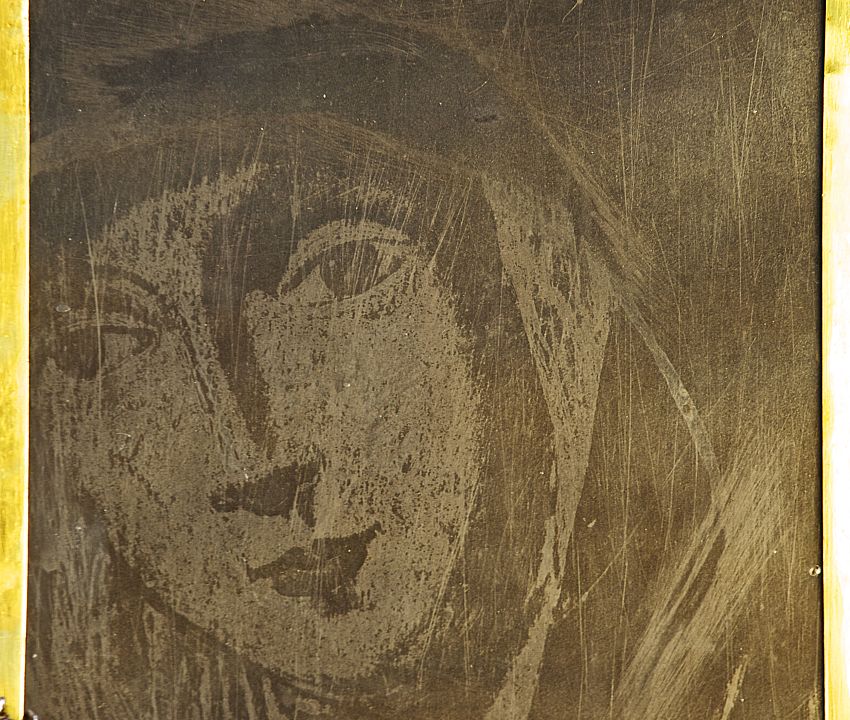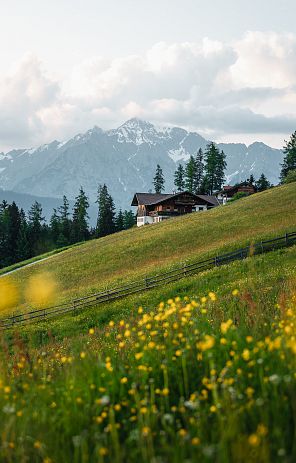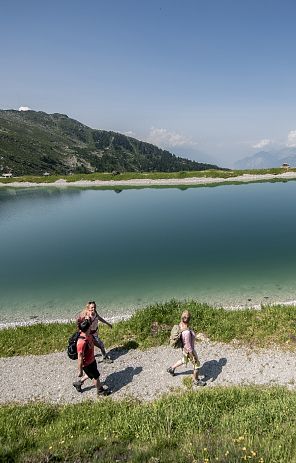Pilgrimage. St. Mary's Basilica Absam
A pilgrimage of a special kind can be made to the Absam Basilica of the Virgin Mary in Tyrol: it is the most famous place of pilgrimage to the Virgin Mary in Tyrol. Absam owes its importance as a place of pilgrimage known far beyond Tyrol to the miraculous image of Our Lady, which appeared on the window pane of a house in Absam on 17 January 1797.
The image of St. Mary can be seen today on a side altar in the parish church. Science tried in vain to explain this miracle. Finally, at the insistence of the population, the miraculous image found its place in the Absam parish church. Since then, the village near Hall in Tirol has been an important place of pilgrimage, known far beyond the borders of Austria. "Maria Absam" - the most important Marian pilgrimage in Tyrol - is above all a place of consolation and hope for many believers. In the 19th century, members of the Austrian imperial family also made several pilgrimages there to see the miraculous image of the Mother of God.
The Marienbasilika is one of the places of power in the Hall-Wattens region.
We will be happy to help you find accommodation for your pilgrimage. Please call us or write to info@hall-wattens.at. Enjoy your time in the Hall-Wattens region. Our summer program offers a rich cultural and activity program to make your pilgrimage, pilgrimage or summer vacation unforgettable.
St. Mary's Square
The unique picture cycle "The Angel of the Lord" can be found on the completely redesigned Marienvorplatz square in front of the basilica. "Everyone who quietly meditates on the messages of the pictures should feel: God became man so that we can take root in him again for our salvation," explains Dean Martin Ferner.
The west-facing chapel has also been redesigned and has been given a special glass altar and glass figures, which form a thematic link with the series of pictures outside. The monthly pilgrimage takes place on the first Sunday of every month at 2 p.m., beginning with the rosary and followed by a blessing of the sick. Pilgrimage groups have the option of a devotion or their own pilgrimage service at any time.
The Way of St. James
The great pilgrimage route crosses the Absam basilica
Following in the footsteps of centuries-old pilgrimage traditions, pilgrims walk along the "Way of St. James" through the Hall-Wattens region and can also find inner peace and balance here. A total of 17 kilometers of pilgrimage through four villages in the region and the town of Hall in Tirol. In Gnadenwald, the trail leads past the idyllically situated St. Martin's Monastery, a Gothic building that was created from a hermitage in 1445. Five and a half kilometers further on, the miraculous image of the Holy Mother of God in the basilica of the pilgrimage site of Absam invites you to pray. The old town center of Hall in Tirol forms a unique ensemble with its narrow, picturesque alleyways and impressive Gothic and Baroque houses. In the oldest village in the central Inn Valley known by name, the crib village of Thaur, hikers can visit the Romedikirchl church dedicated to Saints Peter and Paul.
"The path is the primal symbol of our lives. Our life story is connected with attempts to walk, departures, detours, wrong turns, dead ends, labyrinths and destinations." The path of reflection from Absam to Gnadenwald can also help you to take a step back from the problems and worries of everyday life. A romantic path leads for around an hour through the sub-alpine forest at the foot of the Karwendel mountains between Absam and Gnadenwald.
Nine stations deal with the "Beatitudes" of Jesus Christ in a variety of ways and offer the opportunity - away from the hustle and bustle, noise, haste and stress - to consciously reflect and introspect. Each station offers the opportunity to look away from the daily grind and focus on the essentials. Attention can focus on hopes and fears, small moments of happiness, questions and doubts about life. If hikers walk the path of reflection with an open mind, they can experience wonderful moments of contemplation and perhaps also discover that "beatitudes" can happen in the midst of everyday life. At the end of the trail is the stone labyrinth at St. Martin's Monastery in Gnadenwald, the final point of the trail and a place of special tranquillity.




